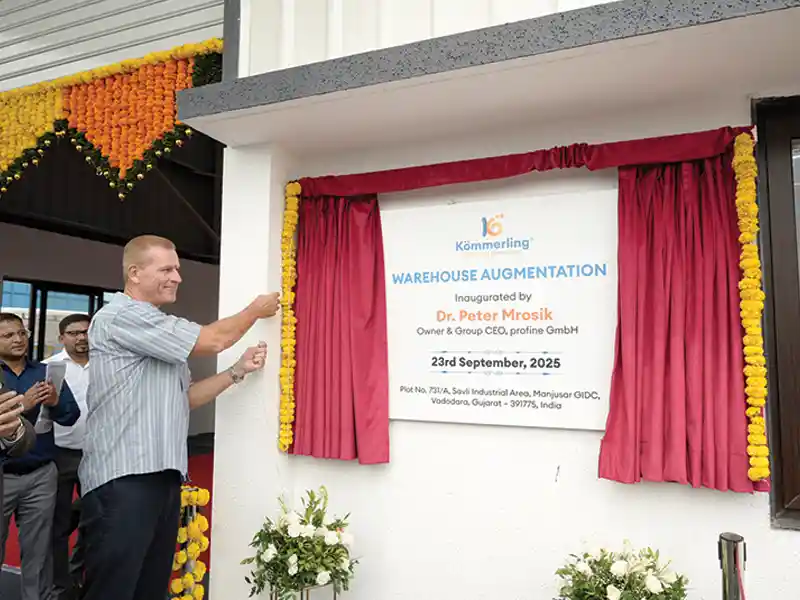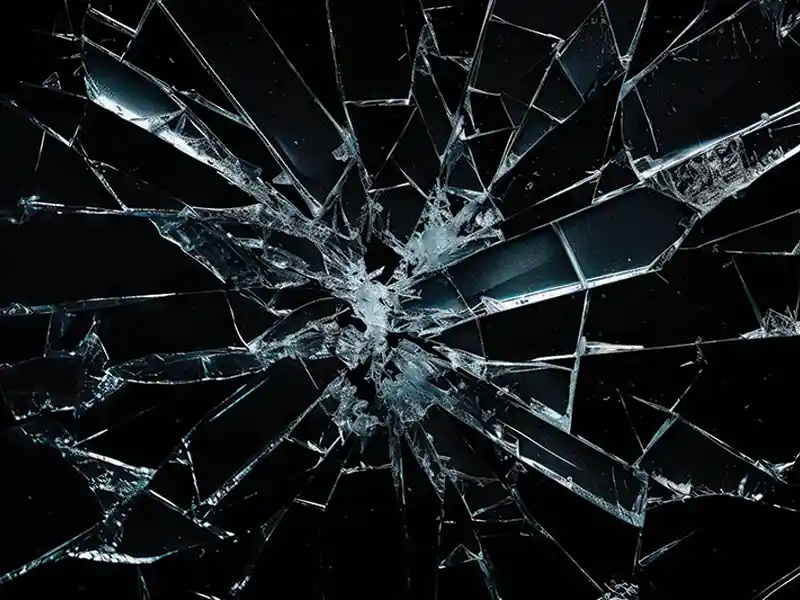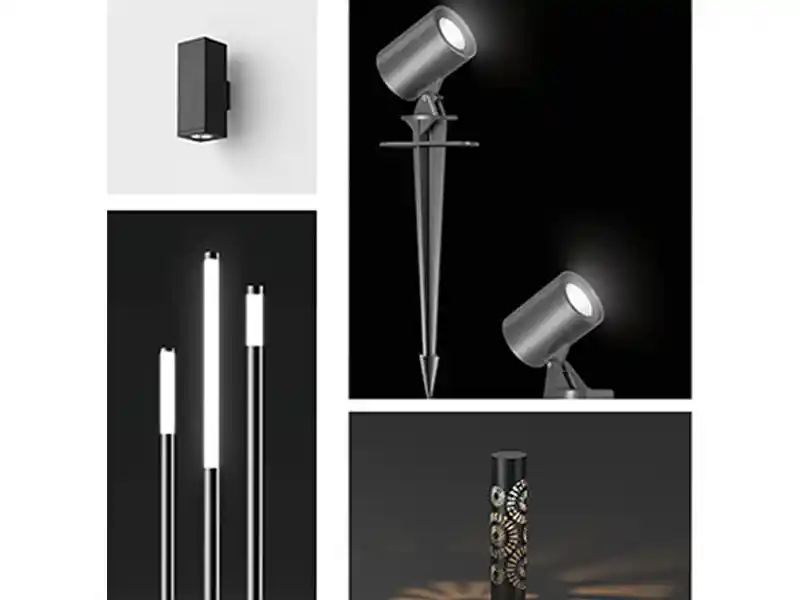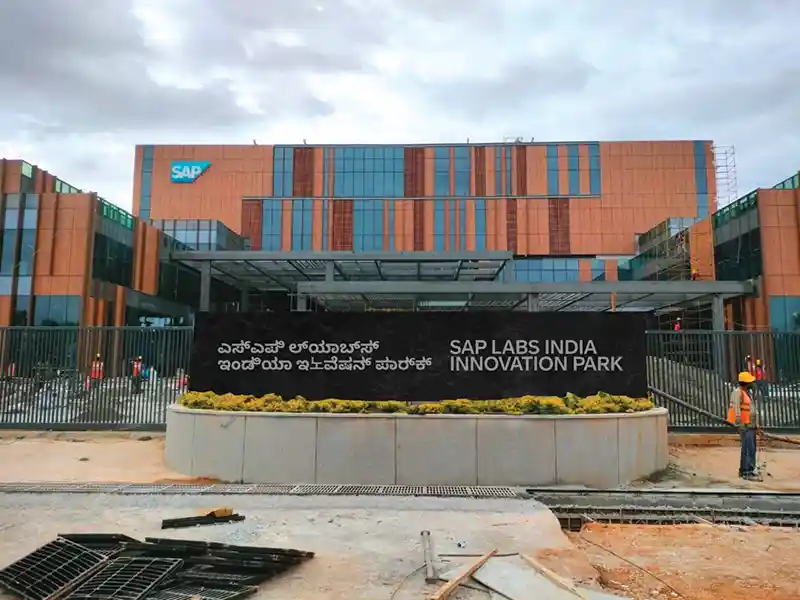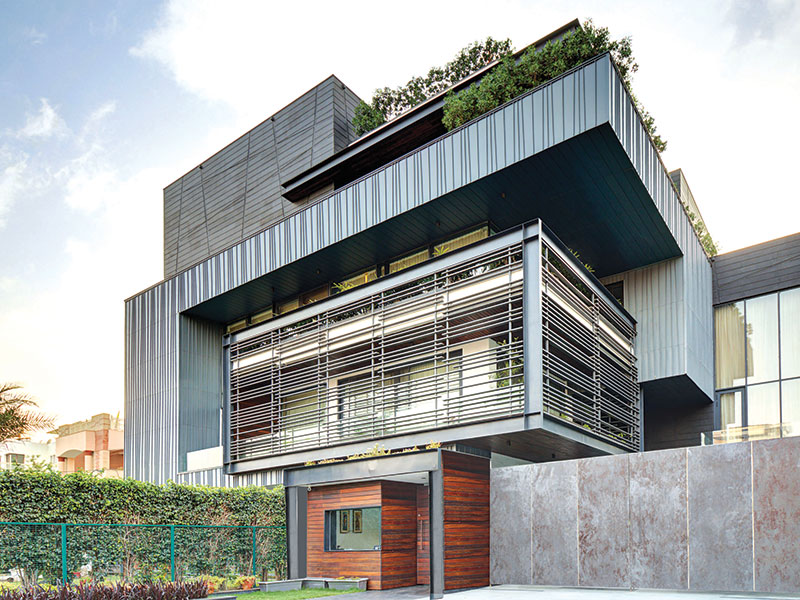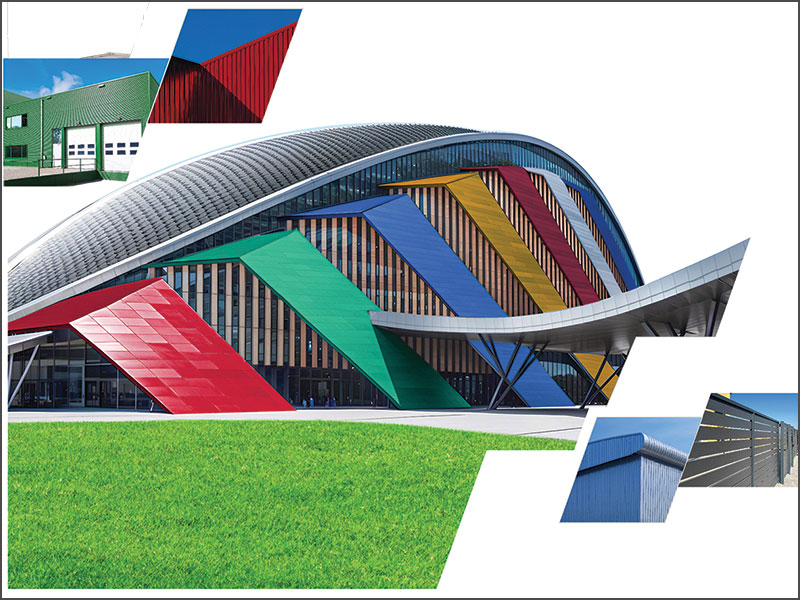
Throughout the ages, humans have always been on the lookout for new ways and techniques to make their appearances more attractive. And that includes the appearance of their buildings. The latest trend to capture the fancy of architects and builders is the use of glass, reports Zehra Naqvi.
In India, the last few years have seen glass become the 'hottest fashion statement' in building construction. The skylines of Indian Metros are dotted with highrise buildings clad in glimmering glass, spelling out affluence and style. People today are willing to splurge on glass just to get that 'hi-tech' and sophisticated look, but there's much more to glass than just that.
Glass glazing, which has become a favored feature in buildings today, has numerous advantages apart from the very obvious 'beauty treatment' that it gives to buildings. Glass reduces the weight on the foundations and makes for a lighter building. Use of glass 'creates space'—not only does it bring the external environment, the skies and greenery outside, into the spaces within the building, it opens up spaces inside. Glazing can also have a tremendous impact on the energy performance of buildings besides enhancing the visual and acoustic effects. Building energy consumption can significantly be lowered by opting for the right kind of glass and the right kind of glazing. Aside from that, glass does not require high levels of maintenance and the different types of glass available today carry an extra feature of safety and durability.

In India, glass glazing has become an industry unto itself with a host of companies providing a plethora of choices for everything –from the type of glass to the type of glazing. Ranging from multinational giants like Saint Gobain or the Korean DM Wall System Co Ltd, to Indian establishments like Sejal Architectural Glass From Mumbai, Glass and Glazing Systems Pvt ltd from Kerala, Glass Wall Systems from Mumbai, Sai Alutek Pvt Ltd from Bangalore, Glass and Glazing technologies Pvt Ltd from Gurgaon or Glazing and Research from New Delhi – there is a huge world of glass and glazing possibilities spread out before the customers.
Vimal Rathi, MD, Glazing and Research, expounds on the virtues of glass for construction: "Glass is light in weight, gives a beautiful appearance and is relatively maintenance free. Proper cleaning once a month or once a fortnight is all you need to keep it in good condition and you won't need to replace it for the next 10-20 years."
Glazing Options
The choices for glass glazing in buildings are numerous, depending upon the requirements. Curtain Walling, Structural Glazing, Bolt Glazing or Spider glazing, Fin supported glazing, Cable Glazing and suspended glazing are all available according to the customer's specifications.Structural glazing utilizes the adhesive qualities of high-strength, high-performance silicone sealant to fix the glass to its support, without the requirement of any beads, clips or bolt fixings.
Bolt glazing, on the other hand, holds the glass by means of visible metal parts, sometimes countersunk and embedded in the glass itself, which cover a small part of the glass surface. Fin Supported glazing uses glass fins instead of frames or mullions.
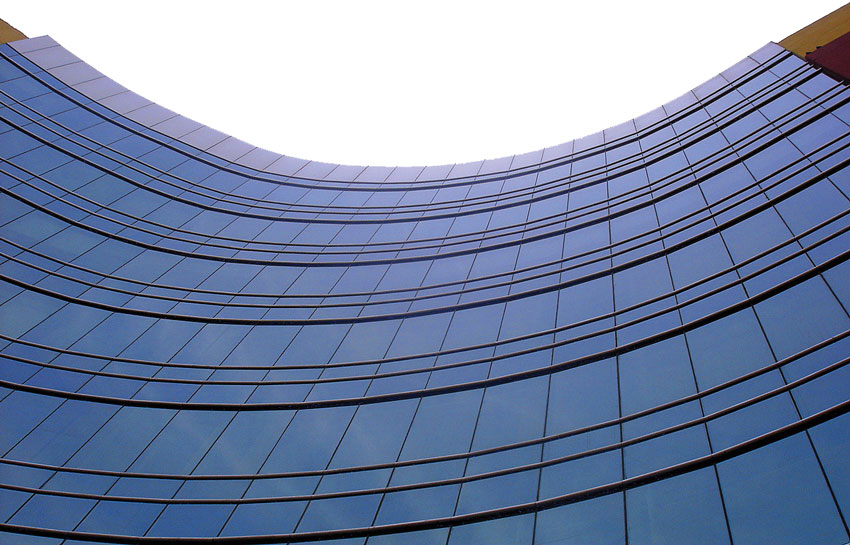
Cable supported glazing uses high strength cables to transfer the load to the main structure while Suspended glazing creates a frameless glazing façade by fixing together a matrix of toughened glass lites, hung from the building structure like a glass curtain.
Most of the companies offer a complete basket of glazing options and services to chose from – façades, canopies, aluminium cladding—the works. Another thing that industry insiders stress upon is the engineering and workmanship, which are considered the most essential points factoring in the glazing of the building.
Ms Geeta, Marketing Manager of Glass wall Systems, Mumbai, cites a number of issues that have to be dealt with during the glazing process. The weight of the glass, structural loads, earthquake movements - all need to be given carefull consideration and the work has to proceed with due care. "It is correct engineering that makes all the difference," she emphasizes.
Mr. Vimal Rathi from Glazing and Research agrees with this observation. "Workmanship and good labor matters a lot. You have to take care that joints are not evident, that the silicon sealant is of the same thickness throughout…and a host of other such issues."
Further safety concerns are added by Mr. Deepak Mehra from Prateek Interiors, Delhi: "It is extremely essential that the fittings be done well. The glass must not slip on any account. Use of good quality silicon is important for that." Mr. Sridhar from Sai Alutek also highlights the importance of correct execution – making corrections in the 'plumb out' by calculating the slab to slab variations in building line. These are of prime concern for making the façade plane as well as secure.
Making Glass Green
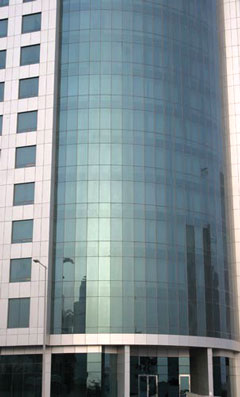
Materials that have good insulation to prevent the heat from seeping in, maximizing of natural day lighting and measures to improve air quality are some of the salient features of sustainability. So you can choose from myriad new forms of glass that can help make your buildings 'eco-smart', both ways
Tempered Glass is one of the 'different' forms, having four times the strength of annealed glass, which gives it superior resistance to glass breakage. It effectively withstands bending and rapid temperature change. If broken, it breaks into many small and thick fragments without sharp edges, making it ideal for places that require safety and durability, like hospitals or child care centers or sport buildings.
Then there is Laminated Glass which consists of two or more lites of glass adhered together with a plastic interlayer. Because it does not splinter into sharp shards on breakage, it is often used as safety glazing and as overhead glazing in skylights. The plastic interlayer also provides protection from ultraviolet rays and attenuates vibration, which gives laminated glass good acoustical characteristics. Laminated glass also has good energy absorption characteristics and is thus useful for enhancing the building's energy efficiency.
You could also try Coated Glass which is covered with reflective or low-emissivity (low-E) coatings. The coatings improve the thermal performance of the glass by reflecting infrared radiation. However, they also reflect back the visible light and hence do not contribute to the natural light and visibility of the interiors. Tinted glass also contains minerals that color the glass uniformly through its thickness and promote absorption of visible light and infrared radiation.
Insulated glass units (double-glazed, triple-glazed) are also quite popular because of their numerous virtues. These consist of two or more lites of glass with a continuous spacer that encloses a sealed air space. The spacer typically contains a desiccant that dehydrates the air space. This reduces heat gain and loss, as well as sound transmission, which gives the glass unit superior thermal performance and acoustical characteristics compared to single glazing. Most commercial windows, curtain walls, and skylights contain insulating glass units.
Gas filled glazing: To further enhance the thermal performance of glazing, the spaces between the panes are filled with inert gases as these have higher resistance to heat flow than air. Naturally, this enhances the glass U-value or resistance to heat trapping.
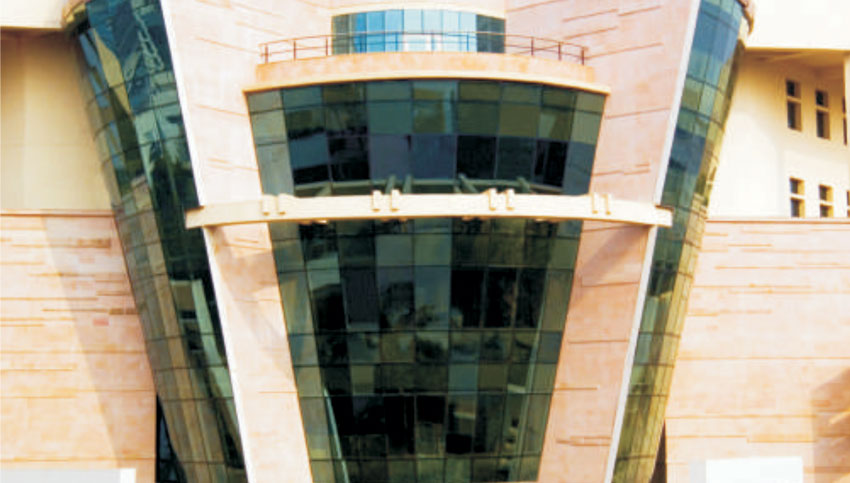
The 'cool-lite' series of Sun-Ban glass from Saint Gobain is quite popular among builders, as Deepak Mehra and Vimal Rathi will both vouch for. Along with these, other Sun-ban glasses include 'Reflectasol' and 'Antelio Plus', Thermal insulation series like 'Nano', 'Nano Star', 'Planitherm' and 'Evo Star' —all from Saint Gobain. Adding another shade of green to glass are the dual-action self-cleaning glasses—Bio Clean. These limit the settling of dirt and grime on the facades, thereby reducing the need for detergents and other cleaners.
Companies like Glass and Glazing technologies from Mumbai bring High Performance glass to India from other countries like the Emirates. High performance glass has the twin powers of allowing better daylight penetration into the building while limiting the amount of heat allowed inside. Buildings like Olympis Technology Park, Chennai, Wipro Technologies –Gurgaon Development Centre, Gurgaon , CII –Sohrabji Godrej Green Business Centre, Hyderabad and Technopolis, Kolkata are all examples of buildings flaunting high-performance glass on themselves.
Then there are 'gen-next' glasses, or spectrally selective glasses, which are 'intelligent' glass units that selectively allow and reject different wavelengths of solar radiation, resulting in better inflow of natural light with considerably reduced heat emissions.
Eco-construction
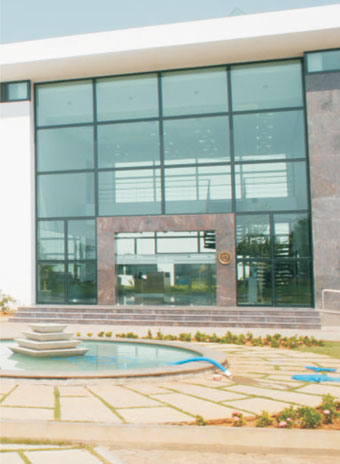
To counter this problem, thermal absorbers suck in the sun's rays rather than bouncing them back, and the best part is that they are capable of converting these into usable solar power! As a final step in reaching the heights of eco-smartness, these can be used to supply power to the building itself.
Sai Alutek Pvt Ltd offers its customers the option of choosing these thermal absorbers, while it collaborates with the providers to check the viability. However, as Sridhar says, "Awareness levels among people are very low. That's why we have had no requests for these adapters so far."
This lack of awareness can prove to be lethal for the environment, as more and more outwardly scintillating buildings spring up as potential heat traps around the country. Efforts have been made by various organizations to popularise 'green construction practices'.
LEED India Rating System & Energy Efficiency
The LEED (Leadership in Energy and Environmental Design) green building rating system developed by the US Green Building Council is now recognized as an international rating system on energy efficiency and resource-friendliness of a building and is followed by more than 24 countries. The LEED rating system has been indigenized by the Indian Green Building Council to suit the national context and priorities. Energy efficiency in design has been achieved by a number of buildings in India by adopting the LEED India green building rating system.Selection of glazing can have an impact on 8 points under the LEED rating system:
- Energy
- Local and Regional Material
- Recycled Content
- Daylight
- Views
Here's a glimpse at some of the Green buildings that India can boast of:
Wipro Technologies Gurgaon Development Centre is the greenest building in India and second greenest building in the world. The building has received 57 points and is Platinum rated. In the case of Wirpo Technologies, glass contributed 2 clear points and 13 combined points.
Grundfos Pumps India Ltd, Chennai LEED - Gold Rated - This building has an absolute non-usage of artificial lighting for the office spaces for the entire part of the day. The air conditioning expenses also have been kept at their minimal best due to the energy efficient glazing. This Green building consumes 25% less energy, compared to conventional building by adopting the above measures.
CII-Sohrabji Godrej Green Business Centre and ITC Green Centre, Gurgaon are both LEED-Platinum Rated buildings with 63% and 45% energy savings respectively.
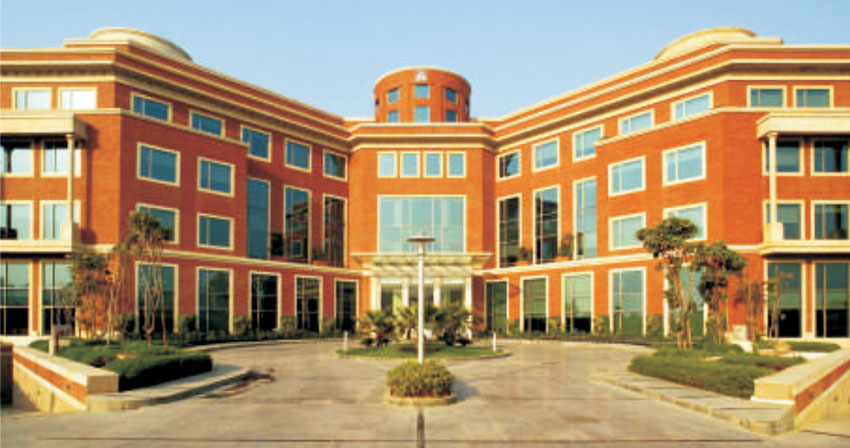
These buildings that are high on the glamour quotient as well as proud holders of eco-sensitive labels can become trendsetters for the rest. So while glass paradises will continue to be the craze in architecture, economy and ecology will have to hold hands and create a green future for glass. That would the most elegant way for enhancing appearances, not just of our buildings but of our entire planet.

